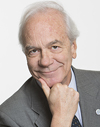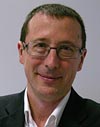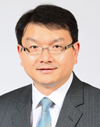Shawn Chandler, Navigant
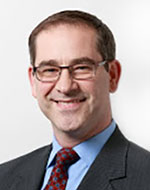 Shawn Chandler is a Director within Navigant’s Global Energy Practice on the Operations and Performance Excellence team, developing and managing complex technology and system integration projects for industry clients worldwide. His focus is on distributed systems development, with an emphasis on communications, analytics, intelligent system architecture and market integration. Mr. Chandler is the Chair of the IEEE Power & Energy Society (PES) Smart Buildings, Loads and Customer Systems (SBLC) Technical Committee, and the IEEE PES Technical Council’s liaison and co-Chair of the IEEE Smart Cities steering committee.
Shawn Chandler is a Director within Navigant’s Global Energy Practice on the Operations and Performance Excellence team, developing and managing complex technology and system integration projects for industry clients worldwide. His focus is on distributed systems development, with an emphasis on communications, analytics, intelligent system architecture and market integration. Mr. Chandler is the Chair of the IEEE Power & Energy Society (PES) Smart Buildings, Loads and Customer Systems (SBLC) Technical Committee, and the IEEE PES Technical Council’s liaison and co-Chair of the IEEE Smart Cities steering committee.
Presentation: Sensing, Analytics and IoT: Potential for Smart Cities
In this session, we explore technology based strategies and solutions for developing analytics and artificial intelligence solutions for use in transactive energy systems to benefit the smart city. Transactive energy systems are relatively new economically based control systems that, when used effectively, can improve reliability and decrease utility costs of service, and integrate the use of distributed energy resources from consumers and energy system aggregators. Finally, this session will explore how transactive systems may serve the smart city to optimize other diverse resources such as electric vehicles and smart buildings, capitalizing on the Internet of Things through diverse sensor networks, and seek to improve quality of life.
Sijie Chen, Electrical Engineering at Shanghai Jiao Tong University
Dr. Sijie Chen is currently an Assistant Professor in the Department of Electrical Engineering, Shanghai Jiao Tong University, Shanghai, China. He received his B.E. and Ph.D. degrees in electrical engineering from Tsinghua University, Beijing, China, in 2009 and 2014, respectively. During 2014–2016, he was an Assistant Research Professor at Washington State University, Pullman, WA, USA. His research interests include demand response, transactive energy system, electricity market, blockchain and machine learning applications in power systems. He is a recipient of Shanghai Pujiang Talent Award.
Presentation: Leveraging Blockchain for Smart Cities
The distribution power system is undergoing a significant transformation with increasing penetration of renewable energy generation and smart loads. Transactions among these prosumers can provide important incentives that drive flexible resources to absorb the uncertainty and variability from renewable energy. The blockchain technology can serve as the underlying transaction and operation platform to ensure trust, transparency, and security. This talk proposes the basic design of a transactive, i.e., transaction-driven, distribution power system based on blockchain.
Mirko Florindo, BT Global Services
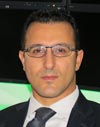 Head of IT Sales Specialists & Industry Solutions – Europe at BT Global Services. Executive in BT Global Services, after 19 years dedicated to the ICT solutions. Expert in Digital Transformation, mainly in the Retail, Manufacturing, Finance and Government sectors. He leads the European IT Division and the Vertical Solutions R&D teams, based in Uk and Italy.
Head of IT Sales Specialists & Industry Solutions – Europe at BT Global Services. Executive in BT Global Services, after 19 years dedicated to the ICT solutions. Expert in Digital Transformation, mainly in the Retail, Manufacturing, Finance and Government sectors. He leads the European IT Division and the Vertical Solutions R&D teams, based in Uk and Italy.
Presentation: Smart Safety in Smart Cities: a concrete solution
“Smart Safety in Smart Cities”, based on BT-Comunica Italia Alert System, is able to collect data from multiple sources, correlate them, define the risk level and quickly alert security forces and/or citizens in case of crisis situations such as natural disasters or terrorist attacks, and also manage timely assistance. The talk leverages on experiences from the field and aims at showing practical approaches to this crucial aspect.
Woon-Seng Gan, Centre for Infocomm Technology in the School of Electrical and Electronic Engineering in Nanyang Technological University
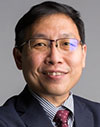 Woon-Seng Gan received his BEng (1st Class Hons) and PhD degrees, both in Electrical and Electronic Engineering from the University of Strathclyde, UK in 1989 and 1993 respectively. He is currently a Professor of Audio Engineering and Director of the Centre for Infocomm Technology in the School of Electrical and Electronic Engineering in Nanyang Technological University. He also served as the Head of the Information Engineering Division in the School of Electrical and Electronic Engineering in Nanyang Technological University from 2011-2014, and deputy director of the Centre for Signal Processing from 2007-2008. His research has been concerned with the connections between the physical world, signal processing and sound control, which resulted in the practical demonstration and licensing of spatial audio algorithms, directional sound beam, and active noise control for headphones.
Woon-Seng Gan received his BEng (1st Class Hons) and PhD degrees, both in Electrical and Electronic Engineering from the University of Strathclyde, UK in 1989 and 1993 respectively. He is currently a Professor of Audio Engineering and Director of the Centre for Infocomm Technology in the School of Electrical and Electronic Engineering in Nanyang Technological University. He also served as the Head of the Information Engineering Division in the School of Electrical and Electronic Engineering in Nanyang Technological University from 2011-2014, and deputy director of the Centre for Signal Processing from 2007-2008. His research has been concerned with the connections between the physical world, signal processing and sound control, which resulted in the practical demonstration and licensing of spatial audio algorithms, directional sound beam, and active noise control for headphones.
He has published more than 300 international refereed journals and conferences, and has translated his research into 6 granted patents and has founded a company, Immersive Sound Technology Pte Ltd in 2015. He had co-authored three books on Subband Adaptive Filtering: Theory and Implementation (John Wiley, 2009); Embedded Signal Processing with the Micro Signal Architecture, (Wiley-IEEE, 2007); and Digital Signal Processors: Architectures, Implementations, and Applications (Prentice Hall, 2005).
He is a Fellow of the Audio Engineering Society(AES), a Fellow of the Institute of Engineering and Technology(IET), and a Senior Member of the IEEE. He served as an Associate Editor of the IEEE/ACM Transaction on Audio, Speech, and Language Processing (TASLP; 2012-15) and was presented with an Outstanding TASLP Editorial Board Service Award in 2016. He also served as the Associate Editor for the IEICE transaction (2014-2016) on Fundamentals of Electronics, Communications and Computer Sciences(Japan). He is currently serving as Associate Editor of the IEEE Signal Processing Letters (2015); Associate Technical Editor of the Journal of Audio Engineering Society (JAES; 2013-); Editorial member of the Asia Pacific Signal and Information Processing Association (APSIPA; 2011-) Transaction on Signal and Information Processing; Associate Editor of the EURASIP Journal on Audio, Speech and Music Processing (2007-).
He was elected as Board of Governor in 2014 and Vice President – Institutional Relations and Education Program in 2017 for the Asia Pacific Signal and Information Processing Association (APSIPA). He also participates in the IEEE Signal Processing Industry DSP committee and IEEE IoT special interest group. He also served as member in the IEEE Signal Processing Design and Implementation of Signal Processing System from 2012-2015; IEEE Signal Processing Education Technical Committee from 2009-2015. Additionally, he is also the General Conference Chair of APSIPA Annual Summit and Conference in 2017.
Presentation: Smart Audio Sensing for Environmental Deployment
With the availability of low-cost, sensing and processing components, we are seeing deployment of smart audio sensors in outdoor environmental monitoring. Audio information provides another dimension to surveillance and monitoring. For example, audio events give extra information on specific incidents; know the precise moment specific sound event happens; and allows us to trigger camera nearest to the incident. In this work, we developed a web-based audio intelligence monitoring at the edge (AI-ME) that can be deployed in indoor environment to recognize activities of elderly staying in alone or in elderly home. AI-ME uses acoustic signal processing with deep learning techniques to learn and understand everyday sound patterns (just like human learn to recognize sound from examples). In addition, putting the AI-ME technology into edge devices means that audio analytic do not have to rely on central server, saving on cost, increasing flexibility and scalability; also can retrofit on legacy devices, like camera. Additional video bandwidth can be saved as there is no need to stream in full high quality all the time; only when a desired sound is detected.
Derrick de Kerckhove, McLuhan Program in Culture & Technology, University of Toronto
Derrick de Kerckhove is former Director of the McLuhan Program in Culture & Technology at the University of Toronto, where he is professor emeritus at the Department of French. He subsequently joined the Faculty of Sociology of the University Federico II in Naples. Presently, Visiting Professor in the Faculty of Design at The Politecnico of Milan, he is also scientific director of the Rome based monthly Media Duemila. He is author of more than a dozen books edited in over ten languages including Italian, French, Spanish, Portuguese and Brazilian, Slovenian, Polish, Chinese, Japanese and Korean. He is also Research Director at the Interdisciplinary Internet Institute (IN3) at l’Universitat Oberta de Catalunya in Barcelona. His fields of research include Technopsychology, Psychotechnology, Neuro-cultural research, Art and communication technologies, Media Theory, Collaborative Educative Software, and Connected Intelligence.
Presentation: Sentiment Analysis: From “Smart” City to “Happy” City
Although automated for text analysis since the late 1960s, Sentiment Analysis (SA) has been around since the invention of literature criticism. Henceforth addressed to the audience, not to the text, SA has been developed technically at least since 2002. It has, however, only recently been given prominence, owing to the manifold increase of available data, in particular thanks to social media.
What SA amounts to is the new possibility for institutions and businesses to listen to clients, patients, customers and citizens instead of simply imposing regulations, services and products. Of course, SA can offer advantage to various fields including health, municipal affairs, political process and policy evaluation, transportation, banking, insurance, security and business. SA has also become sufficiently affordable and relatively easy to make it valuable, if not mandatory, for public administrations to keep tabs on their charges’ feelings about their operation. The idea of the “happy city”, albeit naïve, is responding that of the “smart” city, bringing precisely an emotional content to what planners tend to measure in terms of efficiency. SA adds another set of criteria to manage smart cities and make use of available IoT. SA invites different levels of administration to target a significantly higher level of satisfaction within the social body. It is already happening in some cities. I will give examples both from case studies and from artists whose works hint at social emotion.
This approach could be particularly useful in the context of Singapore and other Asian cities that have made a great leap forward over European or American cities in terms of maximizing the adroit usage of IoT sensors present in their very large distribution of smartphones and public cameras.
Francesco Mazzola, T.net Italia
 Francesco Mazzola, graduated in Electronic Engineering at the Politecnico di Milano in Italy and attended several postgraduate degree programs.
Francesco Mazzola, graduated in Electronic Engineering at the Politecnico di Milano in Italy and attended several postgraduate degree programs.
He has performed his first experience as an expert in multidisciplinary engineering at Snamprogetti (ENI) of San Donato Milanese and then at Agip Petroli of the same group.
CEO and CIO of T.net Italia since 2002 he has leaded T.net, a private held company, into ambitious projects, such as the Oncology Network of Eastern Sicily, whose project received in 2008 in Cernobbio (Italy) the award as an Excellence in Health Digital Information Systems while in 2014, an advanced Hybrid Cloud Project became an Emear Case Study of Cisco Systems.
Since 2007 he has been working on cognitive computing, machine learning (HIS, Pollution Air Modeling) and Software Defined Network development. In 2015 he started the IOT Business Unit of T.net Italia and he is actually involved in building the Middleware Infrastructure and developing the Software Defined Radio to let IOT Sensors talking efficiently to ITS in Smart Road and Smart City context optimizing V2X Communications. He’s also Tech Leader with the University of Catania (IT) in a Smart Farm (Precision Lifestock Farming) Internet of Things Solution and Application named “CowTech”.
Presentation: MaaS Microservices Delivered in a Smart Mobility Context
For cities and territories that want to be really “smart” it’s essential to equip themselves with the enabling infrastructures to help the development of intermodal services, support new way of interacting with customers, citizens, service providers and content, but most of all these services should work in a heavy crowded environment where many vehicles contend for bandwidth and where the limit of the 802.11p protocol could be a problem. Storage of large amount of data, service availability through different media make the context really challenging.
For this reason, we’re developing a smart framework based on Cloud Services, the so called Microservices that may help municipality and motorway concessions to maximize the return of the investment and customer experience.
With our IOT4ITS framework we first allow info flowing correctly from the IOT Sensors field to the Transport Management System and ITS Infrastructure. The meteorological models (Wind, Rain, Moisture, etc) and the predictive algorithm on pollutants and weather help the system to forecast for severe weather condition that may cause asphalt slippery so avoiding hydroplaning and wheelspin. Managed Info through the Infobroker Midlleware are sent as messages to vehicles, e.g. to reduce speed in case of poor air quality problems when the amount of air pollutant concentrations and level of noise reaches critical thresholds.
One thing more to take into notice when implementing large scale smart cities or nations is to deliver the proper information to the right set of Road Side Unit. The combined use of the Infobroker Midelleware and the Network Defined Software installed on IOT/ITS devices can geobroadcast the packets so that they are sent to the rightly involved Road Side Units (RSU).
Using Cloud Microservices makes measurements and info widely available to the uppers levels so that APP developers can use them for many different applications. This framework could be very useful to avoid infrastructures doubling and overhead of sensors and radio object along streets, motorways and expressways and to satisfy market demand that requires development of new technologies and algorithms that use the underlying layers of the network, more and more performing to give quick answers to devices for augmented reality (transactions, info-navigation, emergency calls, essential medical support, etc ) to drones and robots for parcels delivery, to self-driving vehicles, to pedestrians and much more.
Yasunori Mochizuki, NEC
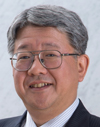 Dr. Yasunori Mochizuki is a Senior Vice President in NEC. Dr. Mochizuki is based in Tokyo, Japan, and is currently responsible for the NEC’s corporate technology strategy. Previously, he was a Vice President for Central Research Laboratory of NEC. He has 30+ years of career as a research scientist and then as a general manager of research departments and his technical expertise covers a broad area including AI-oriented computer science, ICT systems, integrated devices and solid-state physics. He is also a BoD member of FIWAWRE Foundation since March, 2017 representing NEC. Dr. Yasunori Mochizuki received his PhD, MS and BS from, University of Tokyo (Electronics Engineering) in 1987, 1984 and 1982, respectively and joined NEC Corporation in 1987.
Dr. Yasunori Mochizuki is a Senior Vice President in NEC. Dr. Mochizuki is based in Tokyo, Japan, and is currently responsible for the NEC’s corporate technology strategy. Previously, he was a Vice President for Central Research Laboratory of NEC. He has 30+ years of career as a research scientist and then as a general manager of research departments and his technical expertise covers a broad area including AI-oriented computer science, ICT systems, integrated devices and solid-state physics. He is also a BoD member of FIWAWRE Foundation since March, 2017 representing NEC. Dr. Yasunori Mochizuki received his PhD, MS and BS from, University of Tokyo (Electronics Engineering) in 1987, 1984 and 1982, respectively and joined NEC Corporation in 1987.
Presentation: FIWARE: the open platform of choice for Truly Smart Cities
The European Union has invested hundreds of million of Euros over several years in the development of an open platform, FIWare, that can be used in a variety of fields. One of the most important one is Smart Cities. The foreseen investment in the development of applications for Smart Cities over the next 5 years is in the range of billions worldwide and the availability of an open platform promoting re-usability would significantly decrease the investment required and accelerate the deployment.
The talk will elaborate on the critical importance of Context Information Modelling as the concrete enabler for Smart Cities and will present worldwide business experiences in deploying and exploiting the FIWare platform. Both technology, service and policy aspects will be addressed.
Ghee Leng Ooi, Data-Enabled Scalable Research Laboratory, HKUST
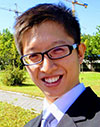 Mr. Ghee Leng Ooi received his B.S. and M.Phil. degrees in Civil and Structural Engineering from the Hong Kong University of Science and Technology (HKUST) and currently is a final-year Ph.D. at the Department of Civil and Environmental Engineering and the co-founder of Data-Enabled Scalable Research (DESR; pronounced desire) Laboratory, HKUST. The DESR Lab is a physical Makerspace, specialized in the applications of Geotechnical Internet of Things (Geo-IoT), Big Data Analytics, and Deep Learning on sustainable urban development and critical infrastructure resilience. The DESR Lab is also an open platform for geotechnical academics and practitioners to collaborate and share resources. He also co-founded AkiraKan Limited, a startup which provides holistic Artificial Intelligence with full-stack IoT solutions to mission-critical enterprise for real-time knowledge discovery and decision-making. Together with his partner Pin Siang Tan, they created the Open Smart Soil Particle (OpenSSP) reference architecture for resilient COTS sensing and its implementation, DeepVibes. They have also spearheaded the integration of Big Data analytics and deep learning into health monitoring and predictive maintenance with applications in large-scale projects concerning public safety in Hong Kong and Taiwan since 2012.
Mr. Ghee Leng Ooi received his B.S. and M.Phil. degrees in Civil and Structural Engineering from the Hong Kong University of Science and Technology (HKUST) and currently is a final-year Ph.D. at the Department of Civil and Environmental Engineering and the co-founder of Data-Enabled Scalable Research (DESR; pronounced desire) Laboratory, HKUST. The DESR Lab is a physical Makerspace, specialized in the applications of Geotechnical Internet of Things (Geo-IoT), Big Data Analytics, and Deep Learning on sustainable urban development and critical infrastructure resilience. The DESR Lab is also an open platform for geotechnical academics and practitioners to collaborate and share resources. He also co-founded AkiraKan Limited, a startup which provides holistic Artificial Intelligence with full-stack IoT solutions to mission-critical enterprise for real-time knowledge discovery and decision-making. Together with his partner Pin Siang Tan, they created the Open Smart Soil Particle (OpenSSP) reference architecture for resilient COTS sensing and its implementation, DeepVibes. They have also spearheaded the integration of Big Data analytics and deep learning into health monitoring and predictive maintenance with applications in large-scale projects concerning public safety in Hong Kong and Taiwan since 2012.
Presentation: The Four Pillars of a Smart City: Agreements, Trusts, Agnostic Infrastructure and Audit Trails
Smart City is not about money; if it is, the future would have been already here, considering the amount of resources nations already threw at the vision. In this talk, we delve into the very reasons why Smart City is hard to implement, and contend that if nations want their cities smart, they should find their Smart City blueprints on top of the four pillars: agreements, trusts, agnostic infrastructure and audit trails. The first pillar solves the incentive misalignments among sensor vendors, contractors and back-end service providers through service level agreements, binding all parties to deliver a long-term, well-maintained and integrated physical and digital solutions. The second pillar solves the potential security threats lurking behind a connected city through end-to-end root-of-trusts in the infrastructure, with suggestions on how nations can assume the role of an overseer of public security from the ground up. The third pillar solves the scalability problems of customized data collection backends and protocols through a flexible and agnostic data collection infrastructure, so that cost and manpower do not get exponentially expensive as deployment scales. The final pillar deals with the assumption that once collected, every data point carries its legal weight. Therefore, we implemented a spatio-multitemporal database to document an immutable audit trail of all processes, from data creation to ingestion to transformation to queries, so that every single commit and change is recorded and version-controlled. All the experiences shared will be referenced to our works with different government bureaus and institutions in Hong Kong and Taiwan for the past 6 years. We contend that when all parties are bound to agreements, when data collection backend is flexible enough to accommodate deployment scaling, when the data collected are trustworthy and leave immutable audit trails, then will Smart City be truly maintainable and secure.
Roberto Saracco, Industrial Doctoral School of EIT Digital
Presentation: Creating a citizens based infrastructure
Information technology and the availability of smartphones plus disseminated IoT allows the empowerment of citizens and careful planning from Municipalities, including education, awareness raising, open data framework can go a long way to leverage on citizenship transforming them into a crucial infrastructure adding to the overall city intelligence and capability. The talk will address the issues in harvesting what is already available and providing the required “glueing” to create an emerging citizens infrastructure. It will be based on concrete experiences derived from EIT Digital Digital Cities effort in Europe and from the IEEE FDC Smart Cities initiative worldwide.
Dale Seed, InterDigital, Inc.
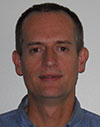 Dale Seed is a Principal Engineer and member of the Internet of Things (IoT) Business Unit at InterDigital, Inc. He has worked at InterDigital for over 10 years and before joining InterDigital, Dale held positions at Intel and Lucent Technologies. As an employee of InterDigital, he is also a member of Convida Wireless which is a Joint Venture partnership between InterDigital and Sony focused on researching future IoT technology areas.
Dale Seed is a Principal Engineer and member of the Internet of Things (IoT) Business Unit at InterDigital, Inc. He has worked at InterDigital for over 10 years and before joining InterDigital, Dale held positions at Intel and Lucent Technologies. As an employee of InterDigital, he is also a member of Convida Wireless which is a Joint Venture partnership between InterDigital and Sony focused on researching future IoT technology areas.
Dale is responsible for the architecture and design of InterDigital’s IoT Platform. In this role, he leads a team of engineers on the development of the IoT platform. He also interfaces to business and product management teams within InterDigital as well as external customers and partners.
Dale also participates in several M2M/IoT industry standards bodies including oneM2M, IETF and ETSI. In this role, he is an active contributor working to define technologies that are helping shape and enable the Internet of Things. He currently serves as Chairman of the oneM2M Architecture Working Group.
Dale holds a MS in Computer Science and Engineering from Pennsylvania State University.
Presentation: Future Proof Planning for Smart City Deployments
Smart Cities represent one of the most challenging IoT deployment use cases. A typical Smart City consists of a diverse collection of sub-systems (traffic, emergency services, water and sewer, parking, etc). Interworking these sub-systems together with one another such that information can be shared between them is a key requirement for enabling more innovative Smart Cities use cases. However, there are several challenges to interworking these different sub-systems together. For example, in many cities each sub-system typically has its own legacy platform that is used to manage the sub-system. These legacy platforms are deployed separate and independent of each other, making interworking between them difficult. In addition, the large investment in these legacy platforms and high cost to replace them prevents city planners from swapping them out for newer technologies.
oneM2M is a horizontal service layer standard that supports interworking different legacy technologies together with one another. Hence oneM2M provides a fast-track and future proof solution for IoT deployments that enables interworking of Smart City sub-systems together with one another.
This talk will elaborate on the value propositions that the oneM2M standard provides for Smart Cities and will present some real-world deployment experiences of deploying the oneM2M standard within InterDigital’s Chordant IoT platform.
Chin-Sean Sum, Wi-SUN Alliance
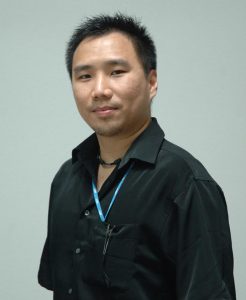 Chin-Sean Sum is the Manager of Certification Programs in the Wi-SUN Alliance, as well as Chair of the Test and Certification and Technical Steering Committees. He received his PhD in Information Science and Engineering from Niigata University Japan, in 2007. From 2007 to 2014, he was a Senior Research Scientist at the National Institute of Information Technology (NICT) Japan. His research interests are wideband communications, energy efficient networks and cognitive radio. He has made significant contributions to many projects in international standardization activities such as IEEE 802.15.3c, IEEE 802.15.4g, IEEE 802.15.4m, IEEE 802.11af and TIA as technical contributor, technical editor or project officers.
Chin-Sean Sum is the Manager of Certification Programs in the Wi-SUN Alliance, as well as Chair of the Test and Certification and Technical Steering Committees. He received his PhD in Information Science and Engineering from Niigata University Japan, in 2007. From 2007 to 2014, he was a Senior Research Scientist at the National Institute of Information Technology (NICT) Japan. His research interests are wideband communications, energy efficient networks and cognitive radio. He has made significant contributions to many projects in international standardization activities such as IEEE 802.15.3c, IEEE 802.15.4g, IEEE 802.15.4m, IEEE 802.11af and TIA as technical contributor, technical editor or project officers.
Presentation: Wi-SUN Alliance Technology and Certification
Overview of Wi-SUN Alliance technology and certification for Smart Cities and utilities
John E. Taylor, Georgia Institute of Technology
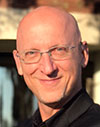 Prof. John E. Taylor is the inaugural Frederick Law Olmsted Professor of Civil and Environmental Engineering at the Georgia Institute of Technology. Dr. Taylor received his PhD in 2006 from Stanford University on the topic of innovation in architecture, engineering and construction industry networks, and his research continues to explore such network dynamics. At Georgia Tech he is the founder and Director of the Network Dynamics Lab (http://ndl.gatech.edu/), which examines industrial and societal dynamics associated with information system integration, industry globalization, workforce virtualization, shifting workforce demographics, energy conservation in and across buildings, and human mobility during natural disasters. Dr. Taylor has authored over 200 technical publications, including publishing over 75 journal manuscripts. His research publications have won a number of conference and journal best paper awards, including five journal best paper awards. He was awarded the ASCE Thomas Fitch Rowland Research Prize in 2009 and the ASCE Daniel W. Halpin Award in 2015 for his scholarship. Dr. Taylor serves on four editorial boards that span computer science, civil engineering and organizational studies, including two as Associate Editor. He has guest edited two journal special issues, most recently a special issue in the ASCE Journal of Computing in Civil Engineering on “Computational Approaches to Understand and Reduce Energy Consumption in the Built Environment” in 2014. For his service, in 2013 he received the Distinguished Service Award from the Engineering Project Organization Society. Prior to entering academia Dr. Taylor worked in industry as a project manager and was the founder of two technology startups in the civil engineering field. Still engaged in entrepreneurship, Dr. Taylor serves on the Advisory Board for three technology startups.
Prof. John E. Taylor is the inaugural Frederick Law Olmsted Professor of Civil and Environmental Engineering at the Georgia Institute of Technology. Dr. Taylor received his PhD in 2006 from Stanford University on the topic of innovation in architecture, engineering and construction industry networks, and his research continues to explore such network dynamics. At Georgia Tech he is the founder and Director of the Network Dynamics Lab (http://ndl.gatech.edu/), which examines industrial and societal dynamics associated with information system integration, industry globalization, workforce virtualization, shifting workforce demographics, energy conservation in and across buildings, and human mobility during natural disasters. Dr. Taylor has authored over 200 technical publications, including publishing over 75 journal manuscripts. His research publications have won a number of conference and journal best paper awards, including five journal best paper awards. He was awarded the ASCE Thomas Fitch Rowland Research Prize in 2009 and the ASCE Daniel W. Halpin Award in 2015 for his scholarship. Dr. Taylor serves on four editorial boards that span computer science, civil engineering and organizational studies, including two as Associate Editor. He has guest edited two journal special issues, most recently a special issue in the ASCE Journal of Computing in Civil Engineering on “Computational Approaches to Understand and Reduce Energy Consumption in the Built Environment” in 2014. For his service, in 2013 he received the Distinguished Service Award from the Engineering Project Organization Society. Prior to entering academia Dr. Taylor worked in industry as a project manager and was the founder of two technology startups in the civil engineering field. Still engaged in entrepreneurship, Dr. Taylor serves on the Advisory Board for three technology startups.
Presentation: Engineering Smart Cities: Integrating IoT into Smart City Digital Twins
Driven by the challenges of rapid urbanization, cities are implementing advanced socio-technological changes as they evolve to become smarter cities. The success of such an evolution, however, relies on solutions that can combine data from individual infrastructure components (e.g., automobile traffic on roadways, occupants in buildings) to the urban scale, and vice-versa. A great deal of research and development has focused on developing an in-depth understanding of data analytics at the scale of the city and the scale of an individual infrastructure component. However, there is a gap in our understanding, data collection approaches, and analytical methods to integrate such disparate data if we are to holistically understand a city’s states of spatio-temporal flux. This presentation will describe efforts to create a Smart City Digital Twin of the City of Atlanta and how such a platform can enable increased visibility into a cities’ human-infrastructure-technology interactions. The presentation will further discuss how spatio-temporal information within a city can be collected from and enabled through virtualization and the connectivity offered by Internet of Things (IoT). As Smart City Digital Twins collect data over time that is integrated across spatial and temporal scales, they will be able to provide critical forward looking insights into a city’s smarter performance and growth.
Paolo Traverso, Center for Information and Communication Technology, Bruno Kessler Foundation (FBK)
Paolo Traverso is the Director of the Center for Information and Communication Technology of the Bruno Kessler Foundation (FBK) since 2008. The Center has about 250 people (researchers, developers, project managers, and PhD Students) who are active in the fields of Artificial Intelligence, Safety, Security, and Privacy, Data Analytics, IoT, and Embedded Systems. Main application areas are Health and Well Being, Smart Cities and Communities, and Smart Digital Industry. From 2011 to 2013, he was the Director of the Trento Research, Education, and Innovation System, the core partner of the European Institute of Innovation and Technology in ICT (the EIT Digital). Since January 2017, he is the Chair of the Node Strategy Committee of EIT Digital Italy. He was head of the Automated Reasoning Systems Division at the Institute for Scientific Research and Technology (IRST) from 2000 to 2007. From 1995 to 1999, he led the IRST lab working on software development and verification, and automated planning and scheduling. He was the coordinator of industrial projects for the development of safety critical systems. He joined IRST in 1989, after working for four years in the advanced technology groups of different companies for management information consulting in Chicago, London, and Milan. In addition to over one hundred published scientific papers – in international journals and conference proceedings – Paolo Traverso is also co-author of two main textbooks in Automated Planning: “Automated Planning: Theory and Practice”, Morgan Kaufmann/Elsevier, 2004 – Chinese translation available; “Automated Planning and Acting”, Cambridge University Press, 2016.
Presentation: Practical Use of IoT Data to Make the City Smarter and Smarter
The availability of data is huge and it is just going to increase in the coming years. The real challenge for a city planner is how to leverage these data that are owned by different parties and ensure policies that are stimulating data sharing and usage.
The talk will address these challenge using the practical experience of the speaker in fostering the evolution of the city of Trento, illustrating the highs and the lows.
The presentation will also look into the near future and the plans for steering the IoT deployment in the urban environment ensuring their effectiveness from a city planner viewpoint.
Tan Kok Yam
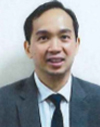 Affiliation:
Affiliation:
Deputy Secretary
Smart Nation and Digital Government Office, and Strategy Group
Prime Minister’s Office
Republic of Singapore
Mr Tan Kok Yam is the Deputy Secretary of the Smart Nation and Digital Government Office (SNDGO), in the Prime Minister’s Office. In this role, he is responsible for the plans to realise impactful projects for Smart Nation, raise quality and inter-operability of Government IT and Smart systems, grow ICT-related capabilities for Government, and engage citizens and businesses to be part of the Smart Nation journey.
Mr Tan is also a Deputy Secretary in Strategy Group and oversees issues related to data, technology and climate change.
Prior to his current post, Mr Tan served in a number of other Ministries within the Singapore Public Service. As the Director of Manpower in the Ministry of Defence, he was in charge of both the human resource and national service policies of the Singapore Armed Forces. He also served previously in the Ministry of National Development and the Ministry of Education, dealing with public housing and higher education policies respectively.
Mr Tan is an engineer by training, having graduated from the University College London in 1997 with a Bachelor in Electrical and Electronic Engineering and a Master of Science in Telecommunications. He also completed the 1-year Sloan Program at the Stanford Graduate School of Business as a Fulbright Scholar.
Dr. Yang Yang
Affiliation:
Director, Key Lab of Wireless Sensor Network and Communication
SIMIT, Chinese Academy of Sciences
Distinguished Adjunct Professor, ShanghaiTech University, China
Dr. Yang Yang is currently a professor with Shanghai Institute of Microsystem and Information Technology (SIMIT), Chinese Academy of Sciences, serving as the Director of CAS Key Laboratory of Wireless Sensor Network and Communication, and the Director of Shanghai Research Center for Wireless Communications (WiCO). He is also a Distinguished Adjunct Professor with the School of Information Science and Technology, ShanghaiTech University. Prior to that, he has held faculty positions at The Chinese University of Hong Kong, Brunel University, and University College London (UCL),
Yang is a member of the Chief Technical Committee of the National Science and Technology Major Project “New Generation Mobile Wireless Broadband Communication Networks” (2008-2020), which is funded by the Ministry of Industry and Information Technology (MIIT) of China. In addition, he is on the Chief Technical Committee for the National 863 Hi-Tech R&D Program “5G System R&D Major Projects”, which is funded by the Ministry of Science and Technology (MOST) of China. Since January 2017, he has been serving the OpenFog Consortium as the Director for Greater China Region.
Yang’s current research interests include wireless sensor networks, Internet of Things, Fog computing, Open 5G, and advanced wireless testbeds. He has published more than 150 papers and filed over 80 technical patents in wireless communications.
Presentation: Fog Computing for Intelligent Buildings and Smart Services
Fog computing has emerged as a promising solution for the Internet of Things (IoT) and next generation mobile networks. As an extension to cloud computing, fog computing enables service provisioning along the continuum from the cloud to things for reducing latency and bandwidth demands, and for empowering end users in their vicinity. Such cloud-to-thing continuum requires full technology support in infrastructure, platform, software and service levels. We propose Fog As A Service Technology (FA2ST) and its architecture to underpin a multi-level system of fog computing services for end-to-end support of various IoT applications, especially for intelligent building management and smart services. This talk introduces a hierarchical fog network for seamless service provisioning in future buildings and cities, with practical constraints, design features and experimental results in different use cases.




